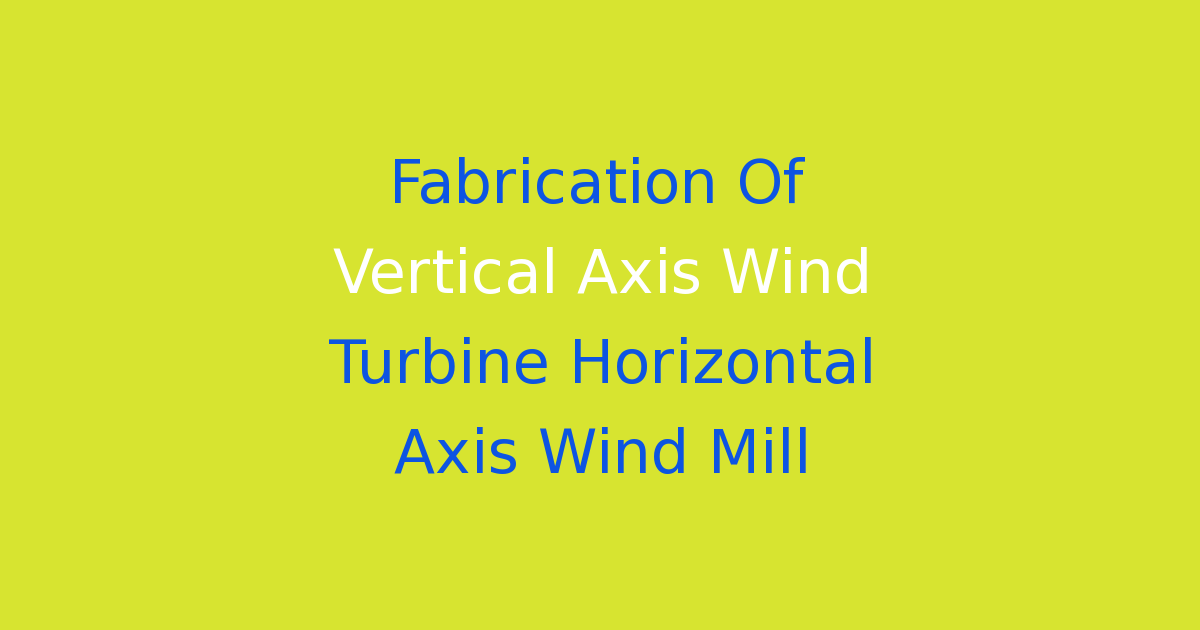Creation of a vertical axis wind turbine instead of a traditional horizontal axis windmill.
Introduction
The generation of electricity through renewable sources has gained significant attention in recent years due to the growing concerns over environmental issues and the depletion of non-renewable resources. Wind energy is one of the most promising renewable energy sources, and wind turbines are used to harness this energy. Vertical axis wind turbines (VAWT) and horizontal axis wind turbines (HAWT) are the two main types of wind turbines used for this purpose. In this project, we will focus on the fabrication of a vertical axis wind turbine as an alternative to the traditional horizontal axis wind mill.
Problem Statement
While horizontal axis wind mills have been widely used for electricity generation, they have certain limitations. One of the main drawbacks of horizontal axis wind mills is that they require a higher wind speed to start rotating and generate electricity. This limits their effectiveness in areas with lower wind speeds. Additionally, horizontal axis wind mills can be noisy and have a larger visual impact on the environment compared to vertical axis wind turbines. Therefore, there is a need for the development of more efficient and sustainable wind turbine designs.
Existing System
Horizontal axis wind mills consist of a rotor with blades that rotate around a horizontal axis. The rotor is connected to a generator, which converts the mechanical energy of the rotating blades into electrical energy. While horizontal axis wind mills have been successful in generating electricity, they have limitations as mentioned earlier.
Disadvantages
1. Require higher wind speeds to start rotating
2. Noisy operation
3. Larger visual impact on the environment
4. Limited efficiency in areas with lower wind speeds
Proposed System
The proposed system involves the fabrication of a vertical axis wind turbine, which operates on a vertical axis instead of a horizontal axis. This design has several advantages over traditional horizontal axis wind mills. Vertical axis wind turbines are capable of harnessing wind energy at lower wind speeds, making them more suitable for a wider range of locations. Additionally, vertical axis wind turbines are quieter and have a smaller visual footprint, making them more environmentally friendly.
Advantages
1. Operates at lower wind speeds
2. Quieter operation
3. Smaller visual impact on the environment
4. More suitable for a wider range of locations
Features
The vertical axis wind turbine to be fabricated will have the following features:
1. Vertical axis design for improved efficiency
2. Aerodynamic blades for optimal wind energy conversion
3. Lightweight and durable materials for longevity
4. Low maintenance requirements
Conclusion
In conclusion, the fabrication of a vertical axis wind turbine as an alternative to the traditional horizontal axis wind mill shows great promise in improving the efficiency and sustainability of wind energy generation. By addressing the limitations of horizontal axis wind mills, vertical axis wind turbines offer a more practical and environmentally friendly solution for electricity generation. Further research and development in this area could lead to widespread adoption of vertical axis wind turbines as a key component of the renewable energy mix.

